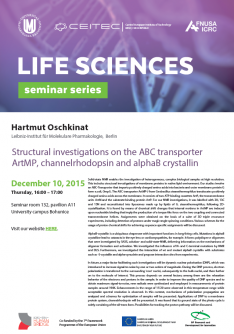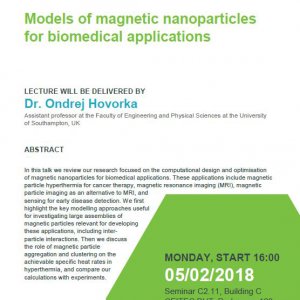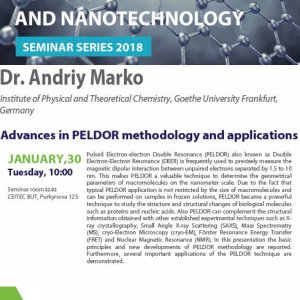Abstract:
Solid-state NMR enables the investigation of heterogeneous, complex biological samples at high resolution. This includes structural investigations of membrane proteins in native lipid environment. Our studies involve an ABC-Transporter that imports positively charged amino acids into bacteria and outer membrane protein G form e.coli, OmpG. The ABC transporter ArtMP-J from Geobacillus stearothermophilus translocates positively charged amino acids across the membrane. It consists of two ATP-binding cassettes ArtP, the transmembrane units ArtM and the substrate-binding protein ArtP. For our NMR investigations, it was labelled with 2H, 13C and 15N and reconstituted into liposomes made up by lipids of G. stearothermophilus, following 2Dcrystallization. It is found by means of chemical shift changes that internal motions in ArtMP are induced upon nucleotide binding that imply the production of a torque-like force on the two coupling and connected
transmembrane helices. Assignments were obtained on the basis of a suite of 3D triple resonance experiments, including detection of protons under magic-angle spinning conditions. Various schemes for the usage of proton chemical shifts for achieving sequence-specific assignments will be discussed. AlphaB-crystallin is a ubiquitous chaperone with important functions in long-living cells. Mutations in alphaB crystalline lead to cataracts in the eye lens or cardiomyopathies, for example. It forms polydisperse oligomers that were investigated by SAXS, solution- and solid-state-NMR, delivering information on the mechanisms of oligomer formation and activation. We investigated the influence of N- and C-terminal mutations by NMR and DLS. Furthermore, we investigated the interaction of wt and mutant alphaB crystallin with substrates such as -S-crystallin and alpha-synuclein and propose interaction sites from experiments. In future, a major factor facilitating such investigations will be dynamic nuclear polarisation (DNP), which was
introduced to increase signal-to-noise by one or two orders of magnitude. During the DNP process, electron polarization is transferred to the surrounding 'core' nuclei, subsequently to the bulk nuclei, and then further on to the molecule of interest. This process depends on several factors; among them are the relaxation behavior of the electrons and protons in the sample. In order to improve the quality of DNP spectra and to obtain maximum signal-to-noise, new radicals were synthesized and employed in measurements of protein
samples around 190K. Enhancements in the range of 15-20 were observed in this temperature range while acceptable spectral resolution is observed. In this context, mechanisms of polarization propagation are analyzed and schemes for optimization of samples will be presented. Applications of DNP to a membrane protein system, channelrhodopsin will be presented. It was found that its ground state of the photo cycle is solely consisting of the all-trans form. Possibilities for tracking the proton pathway will be discussed.








